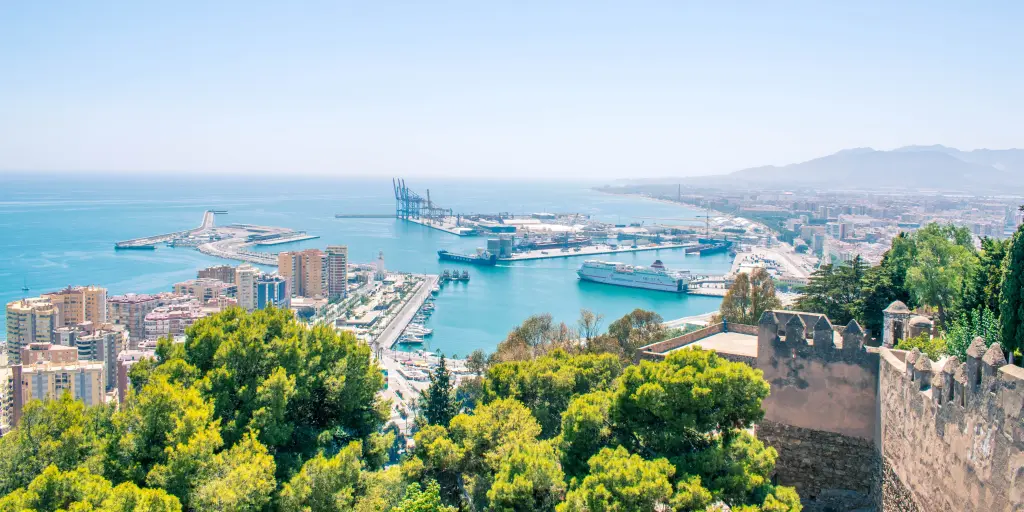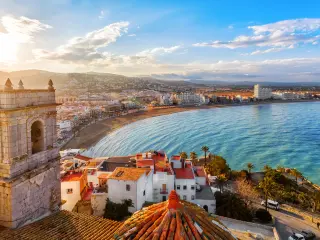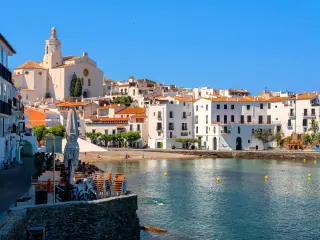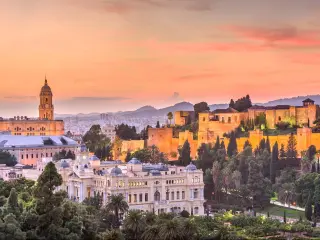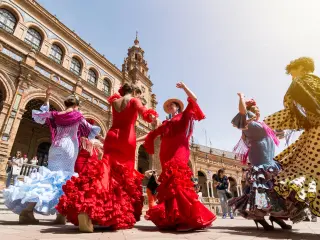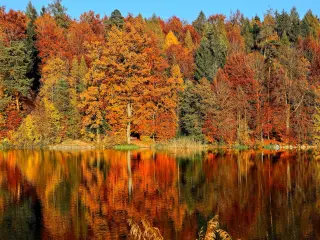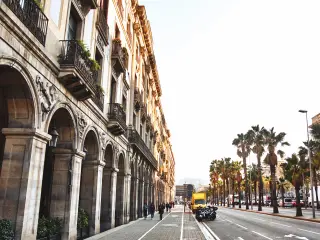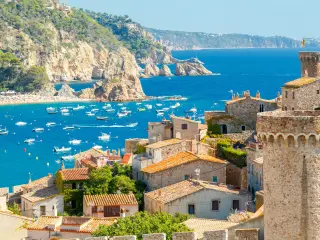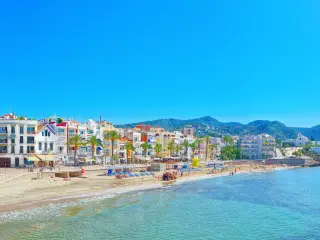Andalucia road trip - Ultimate 11 day itinerary
There are a lot of great regions and cities to visit around Spain, but there is one that stands out as the perfect destination for the ultimate road trip - Andalucia. The weather, the food and the richness of culture make this Andalucian trip one of our all-time favourites at any time of year, so buckle up and read on to find out exactly where to go, what to do and some insider tips.
This 11 day Andalucia road trip starts in Malaga and covers all of the region's top destinations including Seville, Cordoba and Granada.
Want to see more of Spain? Here's a 2-week Spain road trip down Spain's Mediterranean Coast.
Day 1: Malaga to Mijas - fly into Malaga & visit Mijas
Miles: 22
Start your road trip in Malaga
You could really start and end your Andalucia road trip in any of the stops along the way, given the circular nature of our 11-day trip.
Malaga is probably the best choice as it's the easiest destination to fly to (less than three hours from London, with tickets usually reasonably priced) and it allows you a relaxed start and finish on the seaside.
Moreover, you have the benefit of a very short first drive to Mijas, so if you arrive later on in the day, Malaga makes for an ideal start.
Visit the "white village" of Mijas
Mijas is an old traditional Spanish town and is part of the "White villages" dotted around Andalucia. The name implies exactly what it says on the tin: all the houses in town are white and conform to very strict exterior design restrictions.
There are several great places to stay in and around Mijas including some above and below the village.
Our personal favourite is the secluded Guesthouse Montes de Almachada, a five-minute drive downhill.
Mijas Pueblo is a breath of fresh air in a part of the Costa del Sol where large seaside resorts attract the masses. Tucked away in the hills overlooking the coast all the way to Gibraltar, this town is much more popular with local communities than the more touristy resorts of Fuengirola and Torremolinos on the seafront.
There are plenty of different restaurants in Mijas to choose depending on what you're craving.
We would highly recommend El Mirlo Blanco on Calle Cuesta de la Villa: fantastic food cooked and served by local grannies.
Be sure to book ahead of your visit to avoid disappointment!
Have a stroll up and down the narrow streets of Mijas before or after dinner and treat yourself to an aperitif or a digestif at one of the many bars around town; Mijas' best attraction is undoubtedly its relaxed evening atmosphere and positively delicious food.
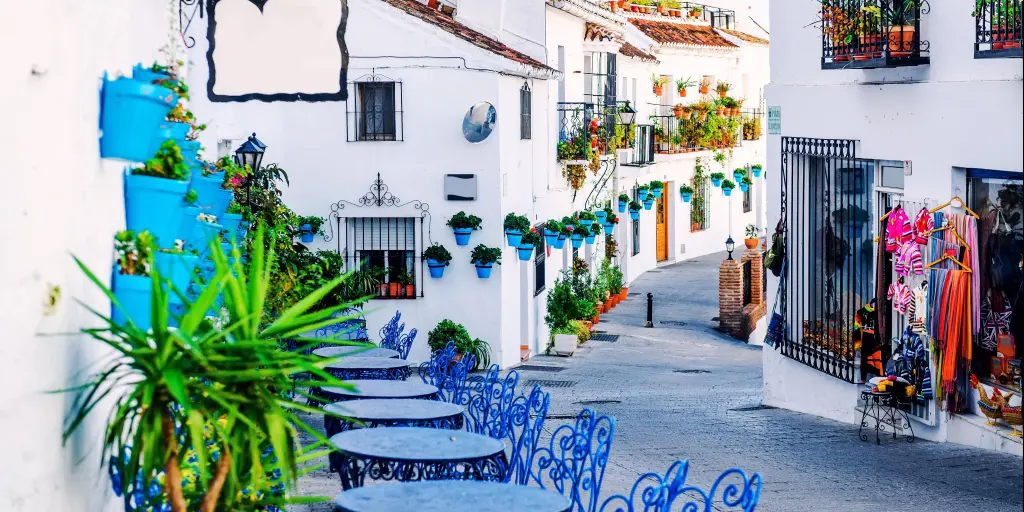
Day 2: Mijas to Vejer de la Frontera - scenic coastal drive & an evening in Vejer de la Frontera
Miles: 114
Morning drive along the Costa del Sol
Once you've clambered out of bed and into your car, you have a beautiful coast-side drive to Vejer de la Frontera to look forward to after breakfast.
There are two motorways running along the coast: a free road running closer to the sea, and a toll road slightly higher up in the hills. While the toll road will be slightly quicker, you also get to see a lot less along the way and the free motorway is pretty good.
We would advise you to keep your cash in the pocket so you can spend it on a cerveza (beer) later on!
Once you've passed La Linea and the Gibraltar rock to your left, you will have two choices on your way up to Vejer.
Both have merits, with the E-5 through Algeciras winding along the coast and the A–381 going up into the Parque Natural Los Alcornocales.
The coast-bound road will take you through a lot of windmills and you will get to see the African coast from near Tarifa. The road even allows for "Mirador" stops to let you get out of the car and enjoy the view.
Our preferred route, however, is through the national park. The A-381 is a great fast road and once you come off onto the CA-212, you get to see a number of unspoilt Andalucian villages surrounded by fantastic scenery.
Spend the evening in Vejer de la Frontera
Vejer de la Frontera sits atop a steep hill, with two winding roads making their way to the white washed houses lining its narrow alleyways. This is a sleepy town with incredible views of the surrounding hills and fields.
Spend the afternoon browsing the various family shops in the central streets before heading to dinner at one of a number of great restaurants.
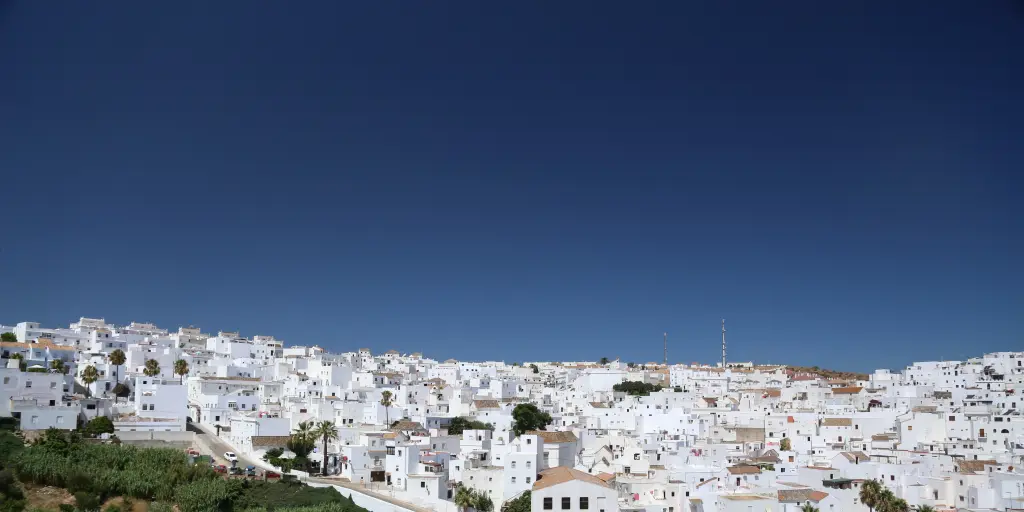
Day 3: Vejer de la Frontera to Cadiz to Jerez - drive to Cadiz & explore the city before driving on to Jerez
Miles: 58
Driving through Andalucia's western province to Cadiz
The drive from Vejer to Cadiz is quite short and takes you along the flat plains of the Cadiz province before making its way through the industrial suburbs of what was once Europe's largest and richest port.
Once you've made it through to the narrow strip of land leading to Cadiz's centre, the scenery quickly changes from shipping yards and distribution warehouses to the yellow stone of a beautiful historic town.
Make your way all the way to the tip of the peninsula and park up at the underground car park just outside the Cathedral.
This fantastic city is somewhat off the beaten track for the tourist masses who prefer to herd along the Costa del Sol with occasional outings to Seville and Cordoba.
This, of course, is fantastic news for the intrepid traveller. The centre is surprisingly quiet, so spend a couple of hours walking around and having lunch.
We recommend visiting the cathedral itself and, knees permitting, climbing up to the top of the Poniente tower for some great views of Cadiz and the surrounding areas.
Once you've made your way back down, be sure to head out to the beach and take a stroll along a man-made path waving through the sea towards an island fortress.
Unfortunately the fortress itself is not open to visitors, but the crashing waves and fresh sea breeze offer a great respite from Andalucia's intense heat.
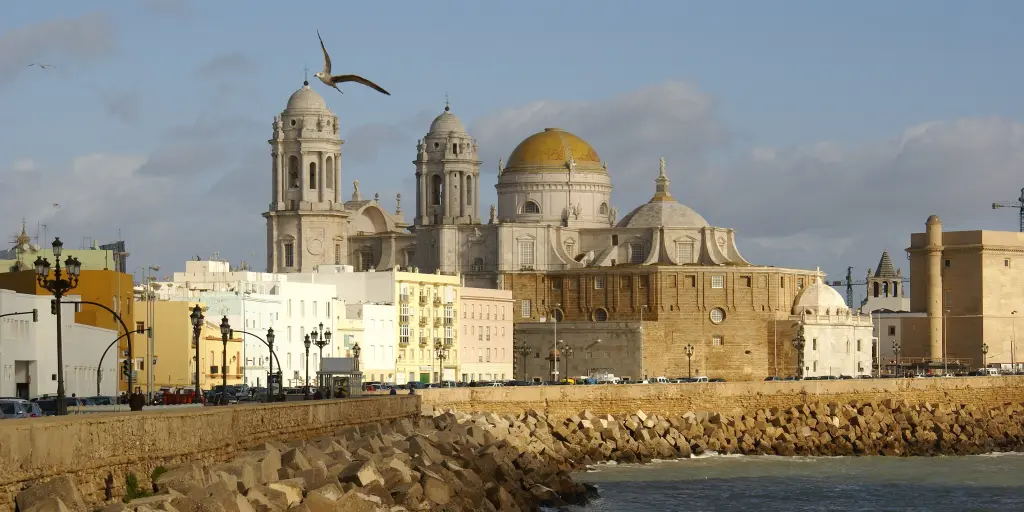
After lunch, it's time to head back out to the concrete jungle on the outskirts of the city before driving through open countryside en route to Jerez. This is a fairly short drive so don't rush your visit to Cadiz, but do be aware of rush hour traffic hitting the streets after 5pm.
Jerez is a fairly typical city for the region. Though it's not as grand or prominent as some of its better known neighbours, it is another great place to avoid the crowds and sample Jerez's unique delights.
Where to stay in Jerez
The elegant Hotel Jerez & Spa, which is conveniently located right near the Real Escuela, has everything you could possibly want from a relaxing resort, from a lovely and delicious breakfast every morning to the luxurious spa.
You'll feel like you've landed in paradise as you kick back by the outdoor pool with a cocktail in hand. After taste-testing all that sherry, it's the perfect place to unwind and lay your head to rest.
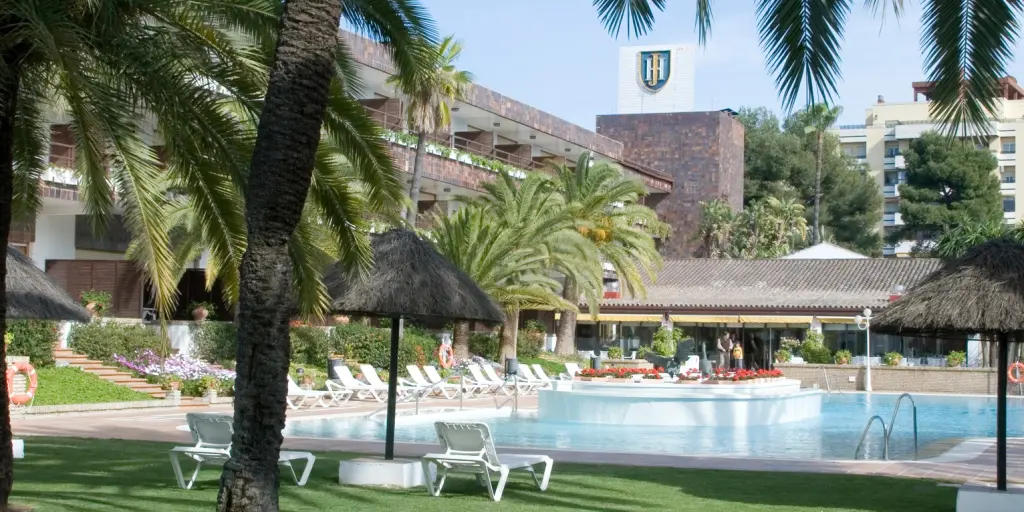

Day 4: Jerez - tour the Real Escuela & learn about sherry at Sandeman bodegas
Spend a day in Jerez: The home of sherry
Jerez is world-famous for two things: horses and sherry.
So, the two things you need to check out while in Jerez are... that's right... horses and sherry! In that order.
The Real Escuela is the largest and most prominent establishment in rearing and training local horses in Andalucian dressage.
To get a tour including watching horses being trained, rock up to the Escuela for 10am. It'll take several hours and if you can come on a Tuesday or a Thursday, you will get to see a Horse Dancing show at noon as part of your visit.
There are occasional Saturday shows through the year, but these tend to get very busy with locals, so midweek options are the ones to go for.
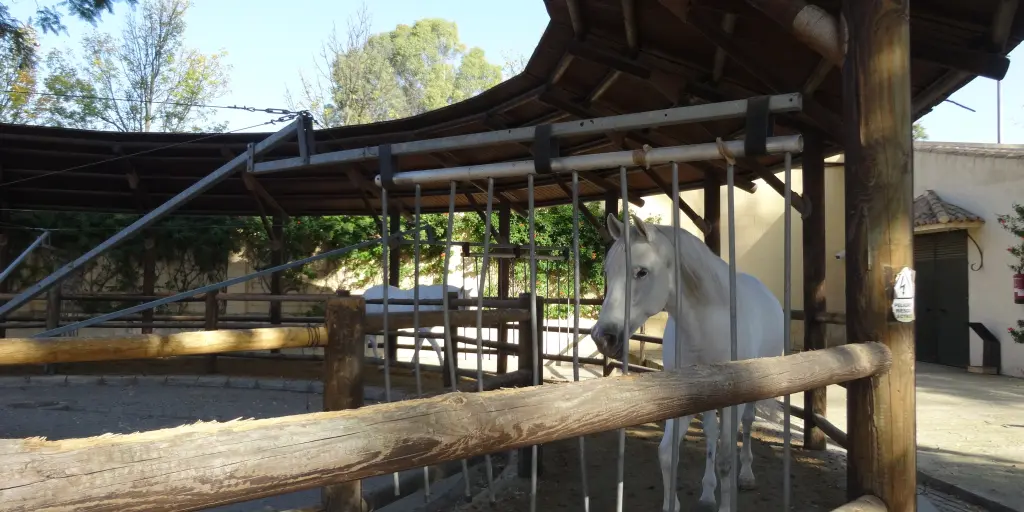
After you've seen enough prancing Andalucian steeds, it is time to try some local sherry.
There are several places to go – Sandeman bodegas is right next door to the Escuela, Tio Pepe is more centrally located, and there are several others spots dotted around town and in the surrounding countryside.
Sandeman has tours in English starting between 2pm and 2:30pm through the year. With most of the smaller bodegas, you should check availability in advance.
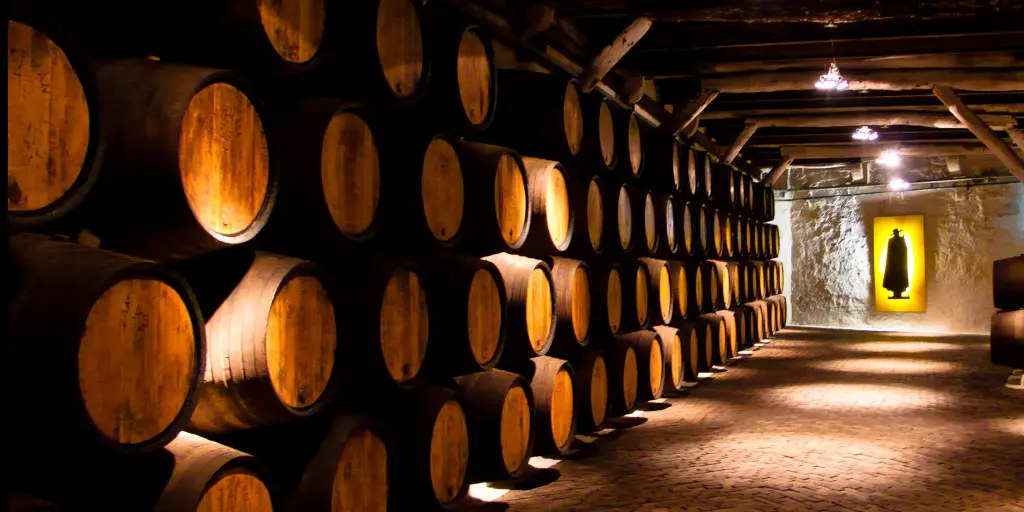
Sherry is named after the city of Jerez, where it has been made for thousands of years, there is no place in the world where you can taste so many different vibrant varieties of the Palomino grape drink.
Day 5: Jerez to Seville - explore historic Jerez & drive to Seville
Miles: 56
Visit the historic sights of Jerez
Just before you set off on the short drive north to Seville, you can take the opportunity to take a stroll through the centre of Jerez and visit a couple of its historic sights. Two visit–worthy locations are the Jerez cathedral and the local Alcazar.
The Cathedral is similar in style to others in the region but following a recent reconstruction is less opulent than some of its better known neighbours.
For a small fee at the door, you can walk around and soak in the serenity of multiple chapels around the perimeter. With several large churches dotted around town, be sure to go to the right place!
The Alcazar is only a brief walk away and is a typical Andalucian residence of the local ruler.
Built in a mix of Catholic Spanish and Muslim Moorish traditions, the Alcazar includes a large garden complete with ancient baths, several outbuildings and a main house albeit most of this building is not open to the public.
The grounds are surrounded by a tall wall with a number of towers which offer a great view over the city centre.
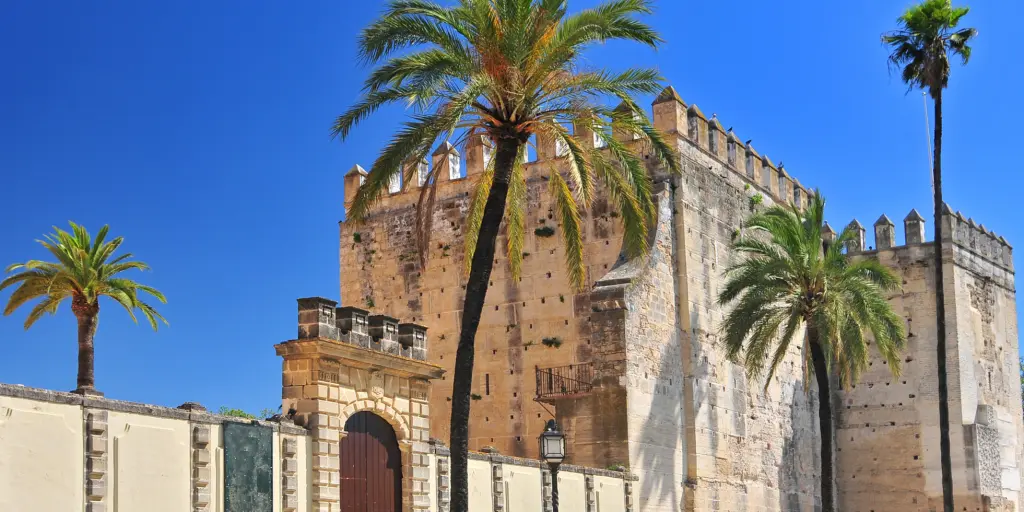
Drive up to Seville for the night
If an 11 day Andalucia road trip is just not long enough, this is the perfect opportunity to fork out and add in some parts of our Portugal road trip itinerary. Your route will still go right past Seville with the border only about 90 minutes from there.
The road to Seville is fairly short and you should be in the heart of the city within an hour.
We recommend staying somewhere in the southern part of the centre as most of the sights, bars and restaurants are all within short walking distance of the Cathedral.
There are a couple of other busy areas in Seville further north, but given you are only in town for two nights, pick your spot wisely.
One thing Seville is particularly good at is food; there is a good selection along the Calle Mateos Gago and along the streets north of the Cathedral with a range of local cured meats and other dishes on the menu.
Day 6: Seville - visit Seville Cathedral of Saint Mary of the See & Plaza de España
Explore the streets of Seville
Seville is a great city for long walks and there is plenty to see just by roaming the streets, sipping orange juice in a small café and people watching.
There are several sights in the centre of the town which are worth paying a visit to on your travels.
Visit the famous Seville Cathedral of Saint Mary of the See
Paying a visit to the world's largest cathedral is an absolute must.
This is truly one of the greatest examples of Spanish architecture over the centuries. As is common for the region, the building was originally converted from the Almohad Mosque - a process that took some 200 years to finish in the 16th century.
Several reconstructions followed riots and an earthquake with large parts of the cathedral completely restored early in the 20th century.
A 105m-tall tower called the Giralda offers stunning views of the city and you don't have to ascend a single stair to get to the top! This converted minaret was designed so that the climb all the way to the bells at the top could be done on horseback via a sloping walkway.
Seville Cathedral is also the spot where explorer Christopher Columbus - or Cristobal Colon, as he's known in Spanish - is buried in an ornate tomb.
For lunch we would recommend exploring the streets immediately around the Cathedral.
There are several restaurants with tables offering views of the square which serve some local specialities including delicious seafood with black ink pasta.
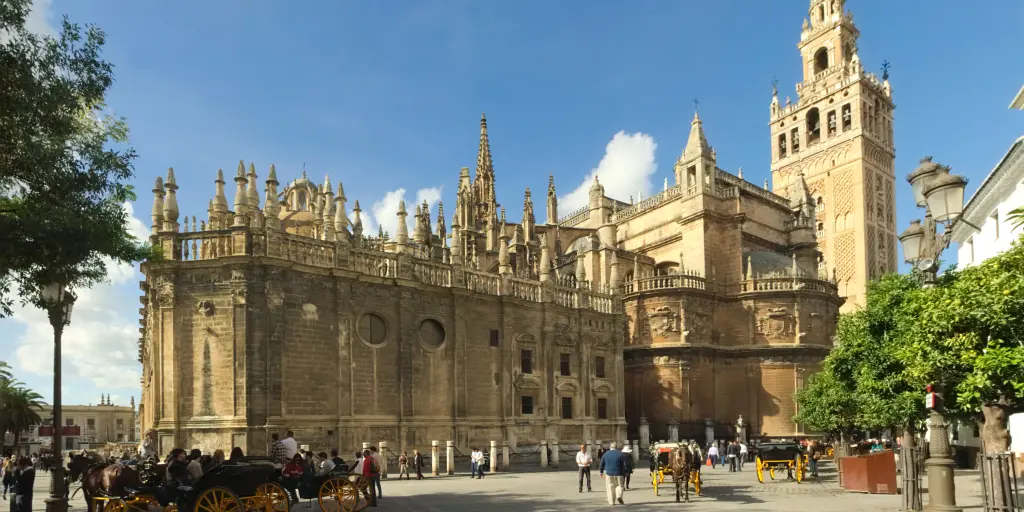
Walk to the Plaza de España
This large square is a little out of the way, situated in a park to the south of the Cathedral, on the other side of the University of Seville. But once you see the beautiful plaza and surrounding moat, you'll know it was worth the walk.
The semicircular construction in the middle of the Parque de María Luisa was built in time for the 1929 World Fair and was designed to symbolise the importance of Spain's regions.
Each province has a small mosaic depicting the local customs and culture with the centre of the square boasting recently renovated fountains.
The main building is not accessible to the public, but you may walk up the grand staircase to take a look from above and take a few snaps.
The rest of the day can be devoted to strolling north past the shopping areas and towards the river.
On your way up, feel free to stop off at the Seville Alcazar fairly close to the Plaza. As you make your way up, you will notice the grand architecture of Seville which is quite distinct from many other Andalucian towns.
Across the river to the north of the centre there is a Theme Park and several quirky neighbourhoods, and there are few better ways to spend your time in Seville than roaming the streets and seeing the different parts effortlessly blend into each other.
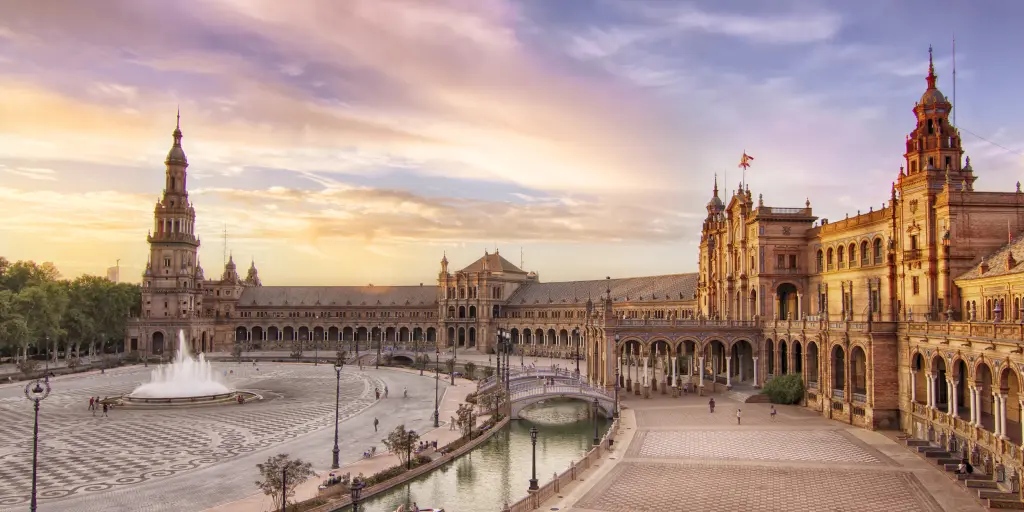
Day 7: Seville to Cordoba - drive to Cordoba & explore the Jewish Quarter
Miles: 88
Drive from Seville to Cordoba
The roads of northern Andalucia are fantastic and very well looked after. They also tend to be very empty - particularly so in the height of the summer - so the drive up to Cordoba should take no time at all.
Hopefully you car's air conditioning works well as Cordoba is the hottest place in Europe!
There are several car parking facilities along the Guadalquivir river but we would encourage you to check whether your hotel has an arrangement with one of these as you can get better rates.
Navigating the narrow streets in the city without a map can be tricky, so arm yourself with a map of the town and go for a stroll.
We would recommend walking along the river and onto the ancient Roman bridge to take in the beautiful views.
Interestingly, Cordoba is a relatively compact town (you can see the boundary and countryside from the very centre) but it certainly has a lot to offer.
One of Europe's oldest and highly regarded academic institutions, Cordoba has been the focal point of Moorish and Catholic culture and studies for centuries.
Stroll through the Juderia (the Jewish Quarter)
The Juderia just off the main square and near the Mezquita is a sprawl of narrow streets with cafés, restaurants and various museums lying along Cordoba's western fortified wall. Here you will find plenty of traditional restaurants well worth a visit for lunch or dinner as well as several quirky museums.
There is a small synagogue built in the Moorish Mudéjar style in the 14th century and a small museum of a typical local house called the Casa Andalusi with a couple of turtles running (much faster than you would think!) around the grounds.
Day 8: Cordoba - the Mezquita Cathedral, the Alcazar, & traditional Spanish food
Visit the Mezquita Cathedral
The Mezquita is one of the best-known religious buildings in the world. Its unique mix of traditional Islamic and Catholic styles is owed to a continuous struggle of the two competing religions to adapt the building and tailor it to their own needs and wants.
As the Mosque and Cathedral changed hands, large parts of the original structure were retained and typically expanded to make it more grand and impressive than before.
Rows upon rows of columned space were added over the centuries, while the Mezquita served as the region's main mosque.
At the final takeover of Cordoba by the Spanish, the Mosque was finally converted into a Cathedral and the central part was redesigned into an altar and choir area, but much of the original structure remained, making this structure very unique.
There are different ticket options including the night tour, but visiting during the day is our preferred choice.
The more expensive night visit provides a video about the Mezquita's history, but your visit is constrained by having to walk around in a large group and listen to the tour guide.
In the daylight, you can explore at your own pace, look at different parts you are interested in and take a moment to reflect without being rushed.
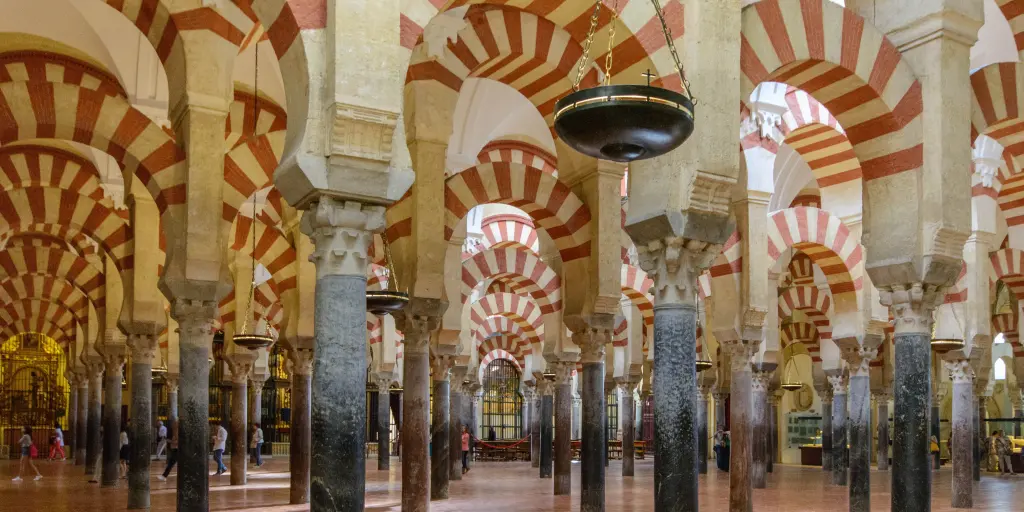
The Alcazar and evening in Cordoba
The Alcazar is just a short stroll away from the Mezquita, with the main entrance just behind a small orange grove.
This Alcazar is particularly large and opulent, with an incredible garden and fountains.
This Alcazar de los Reyes Cristianos was the medieval centre of Cordoba and the place Spanish Kings called their home in the province. The grand compound was used as a prison from 1821 until the 1950s, when it was returned to its former glory and reopened to the public.
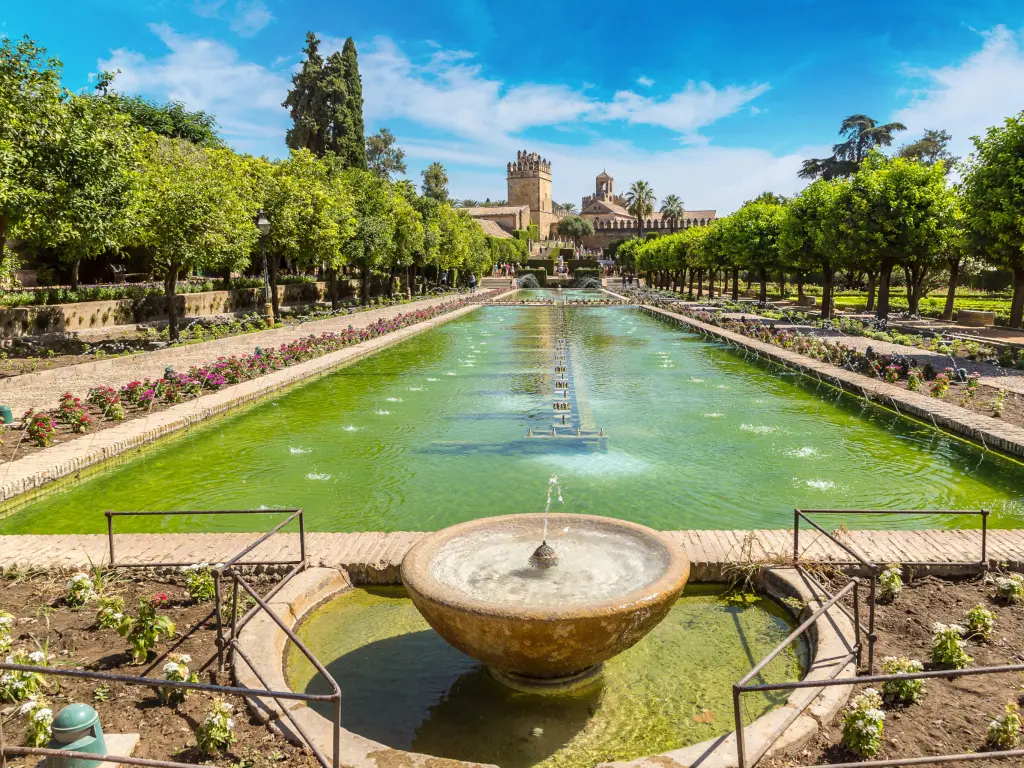
Have a traditional Spanish dinner
Dinner options in Cordoba are varied and there are some absolutely fantastic restaurants to choose from.
Our personal favourite is the Regadera which we visit every time we find ourselves in Cordoba. The food here is out of this world; try it with a local red wine with a hint of fizz.
Day 9: Cordoba to Granada - drive to Granada & explore by going shopping and having lunch
Miles: 100
Drive from Cordoba to Granada
9 days into your trip, there is no need to rush; this day's aim is to relax and get across to Granada.
There are several routes you can take on your way down from Cordoba. The fastest route will take you along motorways to Antequera and then along the A-92 to Granada.
Throw in another 20 minutes and you can take the road less travelled along the N-432. Snaking along the hills of the Andalucian plateau, this will certainly offer a much more entertaining drive through small settlements along the way and provide for great views.
Be sure to fuel up before you get going as petrol stations are at a premium on smaller roads.
Arrive in Granada and do some shopping
Granada is yet another striking Andalucian city.
Built in a much more continental style than Cordoba, its narrow one-way central streets can be hard to navigate.
Plan on what you want to do with your car in advance (check whether your hotel provides parking) as space in the city is at a premium; prepare for daily rates to be expensive!
Once you've settled into your hotel, take a stroll along the Calle Reyes Catolicos and the adjoining streets for a bit of shopping.
Lunch can be had at one of the cafés in the Plaza de Bib-Rambla or in the small square behind the Cathedral just off the Calle Pie de la Torre - here crispy pancakes with prawns are delicious!
Take your time to explore the lower parts of Granada as you will have plenty of time in the next two days to make your way further up the river - there are several interesting churches and great tapas on offer.
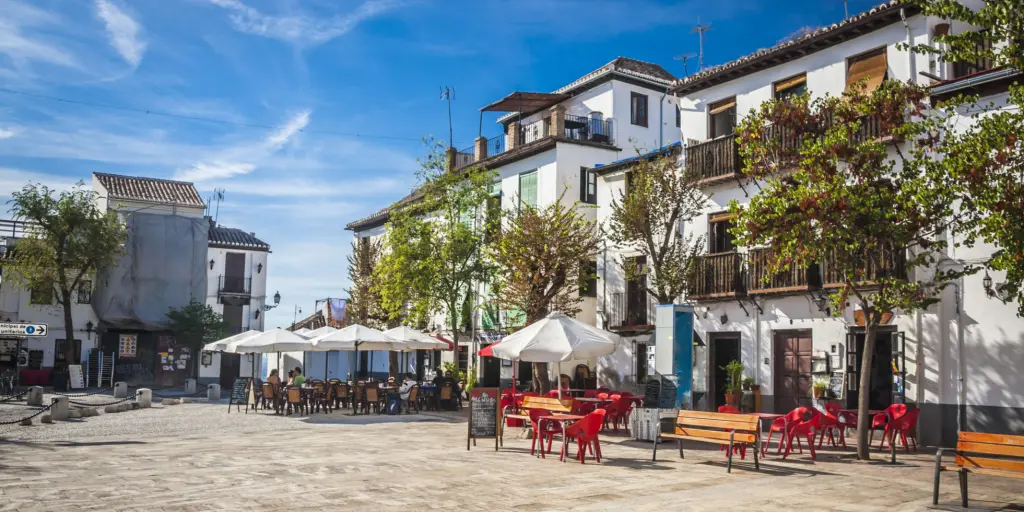
Day 10 - Granada - visit the Alhambra & explore the Albayzin neighbourhood
Visit the incredible Alhambra
The Alhambra is perhaps Spain's best known attraction and sits perched atop a hill overlooking the rest of the city.
Make sure that you book your tickets well in advance as this will save you a lot of time and stress. There are daily limits on the number of visitors and huge queues early in the morning to try and get in.
Travel tip: Get yours online and collect them at one of the machines by the entrance.
There are buses running to the entrance and other ways of getting up to the top, but the best route is up the Cuesta de Goméres through a park.
Treat yourself to a huge ice cream just off the main square at the bottom; a relaxed stroll to the top should take about 20 minutes.
There are several parts of the Alhambra to visit; the extensive gardens towards the back and near the entrance, several buildings in the middle section, the Nasrid Palaces and the towering Alcazaba at the front of the fortress.
The Nasrid Palaces are the only part of the Alhambra where you have a dedicated time slot for your visit assigned on the ticket – be sure to join the queue 25 minutes before this slot.
The Nasrid Palaces are a beautiful set of rooms, fountains and gardens where the visiting royalty would stay during their visit to Malaga. Ornate windows and doorways and preserved beautiful mosaic tiles attract visitors from all over the world.
Make sure you climb the Alcazaba's towers and you will be rewarded with fantastic views of the entire city of Granada and the surrounding countryside. You only get one opportunity to enter the front section so make it count!
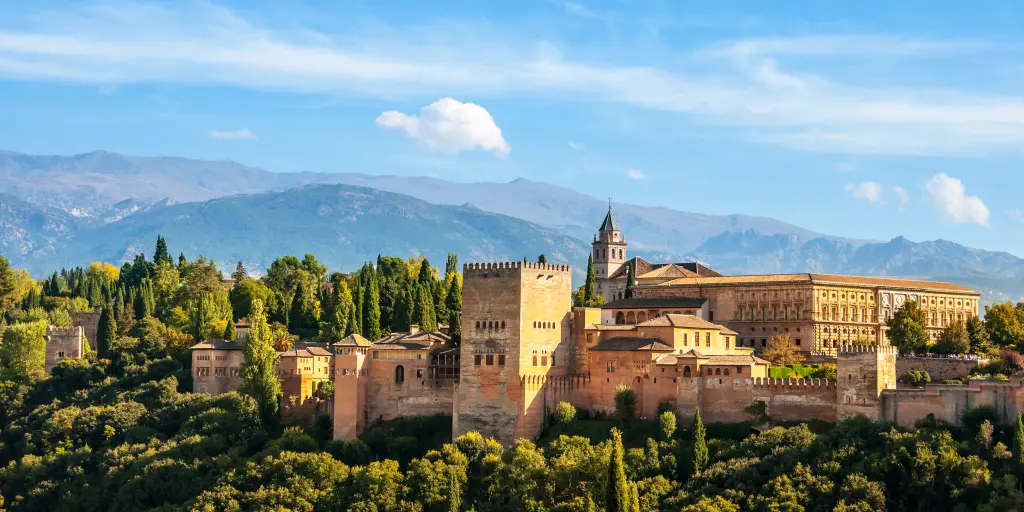
Discover the Albayzin neighbourhood
Once you have taken in all the sights and delights of the Alhambra and made your way down to the bottom, make your way along the Carrera del Darro.
This is a small road running along the river Darro off the Plaza Nueva. Stray cats have made the river banks their homes and appear to be the second most popular tourist attraction in the city.
Take any of the streets leading uphill and make your way into the Albayzin.
Here you will find narrow streets with low white-washed houses and a unique atmosphere. There are plenty of shops selling goods and clothes you would sooner expect to see in northern Africa, but this is no tourist trap - you will find plenty of locals roaming around the shops.
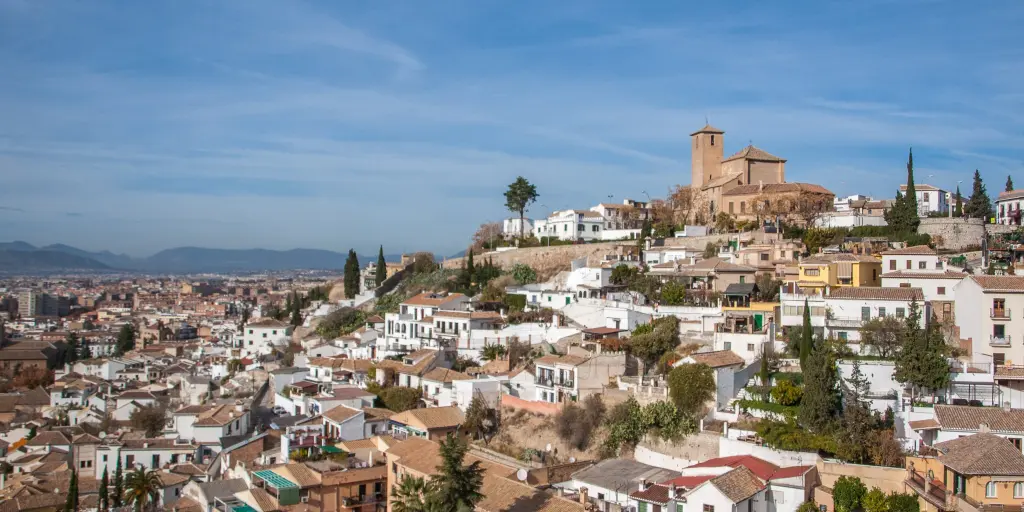
Spend the rest of the afternoon resting your feet in your hotel room before heading out to any of Granada's myriad of fantastic restaurants.
A good day's walk needs to be rewarded with some local dishes. Strong Arabic influences mean that stews are the order of the day, with cold meat platters to start and various battered seafood options as an alternative. Yum!
Day 11: Granada to Nerja to Malaga - drive to Malaga to end your trip, stopping for an ice cream in Nerja
Miles: 94
Have breakfast in Granada then continue your Andalucia road trip
There are few things as good at breakfast as fresh blood orange juice. With numerous varieties growing on trees right outside your hotel, it is a sin not to try some first thing in the morning.
Pack your bags into the car and leave it until after lunch, then spend the rest of the morning in Granada before heading off back to the Costa.
Head towards the Granada Cathedral in the old town.
When Granada was recaptured from the Moors in 1492, the Spanish destroyed a large mosque in the middle of the city and set about building a colossal cathedral to reintegrate the city with Catholicism.
This made the cathedral particularly opulent, and the abundance of marble and gold inside makes it an absolute must on your itinerary.
The streets immediately surrounding the cathedral have plenty to look at, from unusual shops and restaurants to large stalls selling spices from every corner of the world.
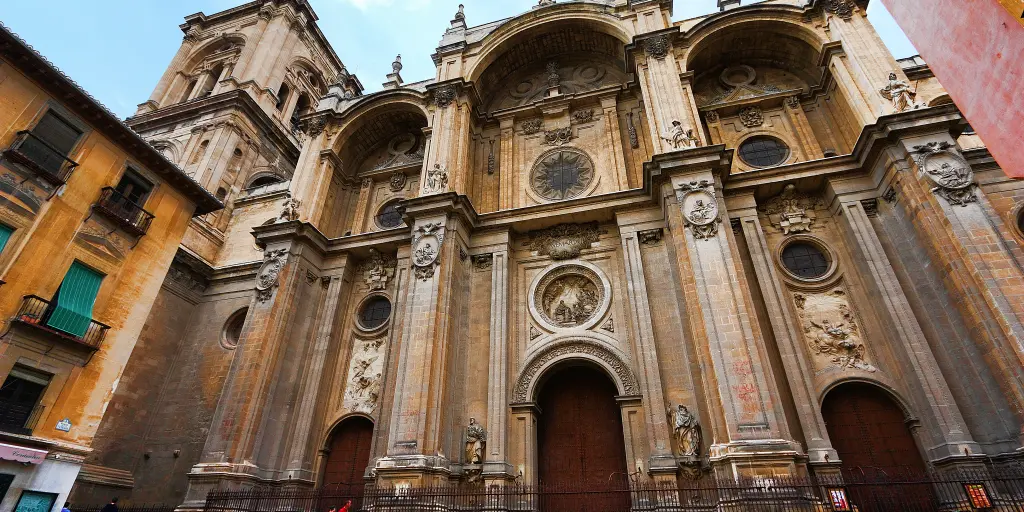
The Capilla Real is a church neighbouring the Cathedral that was built before the main cathedral's construction was started. A much more sombre building, it houses several marble tombs of 15th/16th century Spanish Kings.
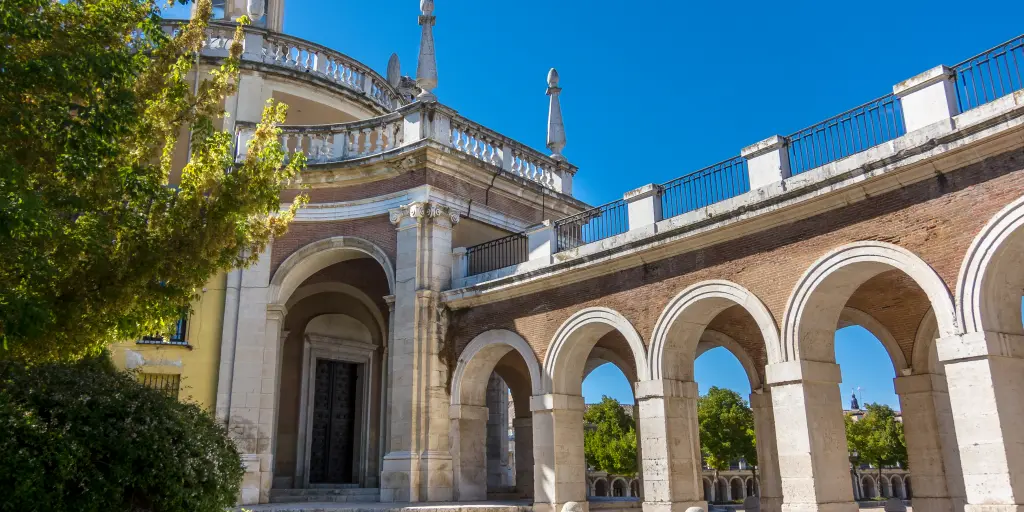
Drive from Granada to Malaga via Nerja
Once again you have a choice of two ways to get down to Malaga.
One takes you along a motorway to Antequera and then down through a tree–lined valley to the Costa's largest city.
A different route will head straight to the sea along the A–44 ending up at Motril. From there, you can take the N–340 along the Costa all the way to Malaga.
There is a toll option running further uphill, but this misses out on all the sights and towns along the way.
Nerja is worth a quick stop for an ice cream break and a stroll along the Balcon de Europa pier if you fancy a break.
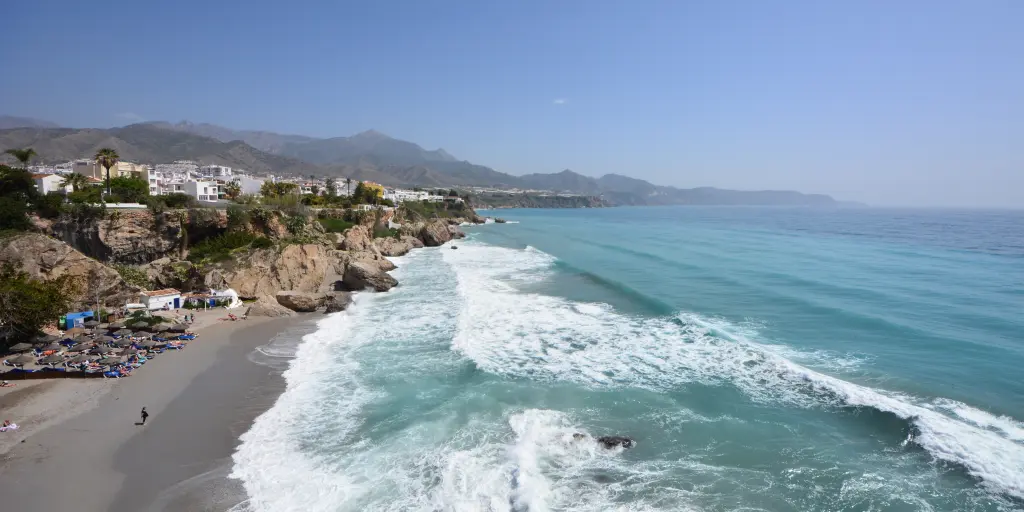
Down in Malaga your trip reaches its end.
If you're not heading straight off on your drive home or for the airport, we recommend stopping in the city centre for a few drinks overlooking the sea.
If you haven't had enough of sight seeing, the Cathedral is worth popping into right in the heart of Malaga's old town and there is a very good Picasso Museum celebrating the city the painter chose to be his home.
Malaga has been much more strongly influenced by development and tourism, which makes the city look very different to the others you will have visited on your trip around Andalucia.
Large streets, a much more European feel and plenty of open space will seem at odds with the Arabic influences of cities further north, but will provide for a refreshing breeze at the end of an action-packed visit to Spain's southern province.
If you've got time, have a walk up Mount Gibralfaro (it's not too strenuous and takes about 25 mins) and admire the panoramic views from the top.
